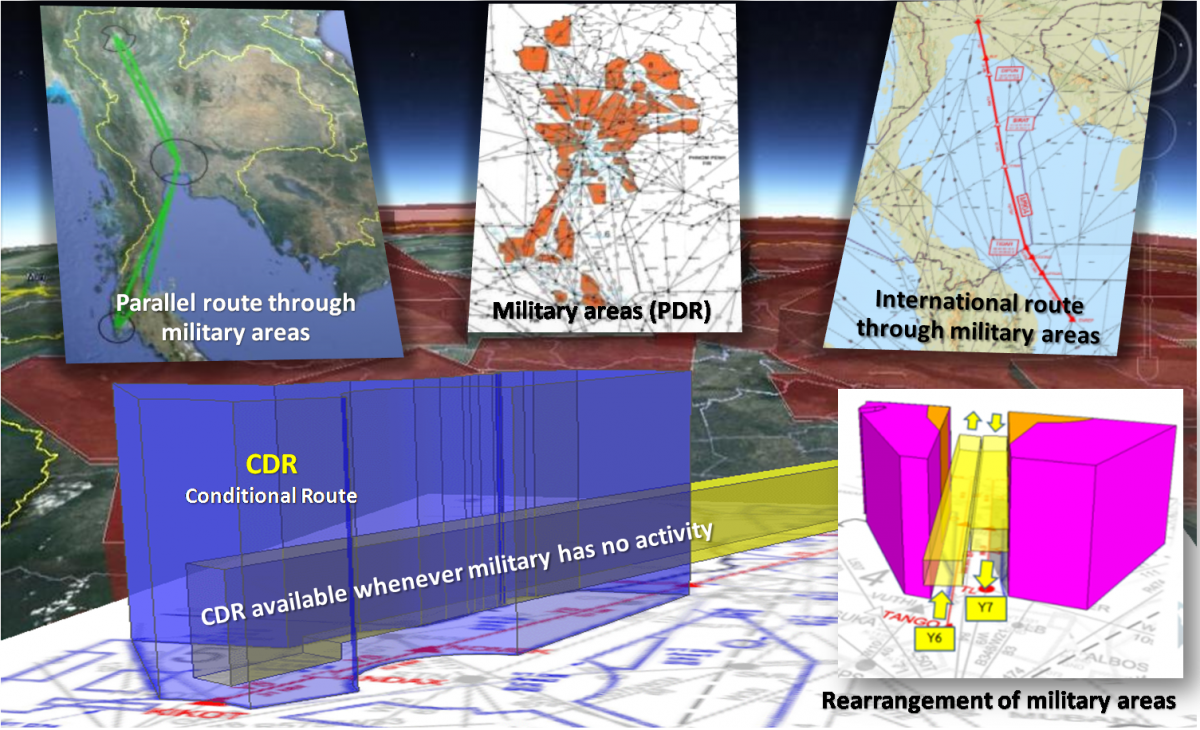The current and ongoing rise in the number of flights has resulted in limited airspace with congested air traffic conditions. Therefore, airspace management is a concept that has been established to manage airspace while boosting the efficiency of airspace utilization as suitable for different types and kinds of airspace users.
Airspace management involves arranging for the structures of each aspect geared at suitability with the amount of air traffic at certain times, e.g. adjusting route structures, airspace structures and the sectorization of airspace. Actions can be taken by a number of methods as follows:
- The creation of Area Navigation (RNAV) routes using PBN (Performance Based Navigation) technology in order to create parallel routes (reduce the distance between routes) and increase the capacity for handling flights (reduce the separation between aircraft on routes) with uni-directional air traffic management to increase safety for aircraft flying toward one another and reduce the workload of air traffic controllers and pilots.
- Sector redesign and configuration that is suitable for air traffic conditions during each time period.
- Flexible Use of Airspace (FUA) and the use of Conditional Routes (CDR) to make airspace flexible with proper time sharing between the military and civil servants. In Thailand, the aforementioned military-civil service cooperation has been arranged under the Thai Civil/Military ATM Coordination Centre (Thai-CMAC).
